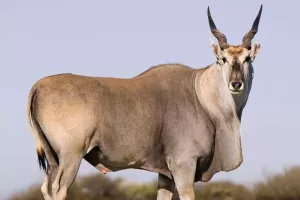Whenever the fox is mentioned, everyone associates it with insidiousness, cunning, and guile.
In fact, the fox is a very intelligent animal, come and learn about several kinds of foxes.
1. Arctic fox
The Arctic fox is snowy white all over, which is not only its protective color but also its cold-proof clothing.
The Arctic fox likes to eat rodents, rabbits, birds, and fish, and in case of extreme food scarcity, the Arctic fox also eats some seaweed.
To obtain delicious food, the Arctic fox has evolved a particularly strong head, and often hits the ground with its head, burrowing its head deep into the snow and then grabbing a lemming.
2. Auricular fox
One of the cutest animals on earth, the auricular fox lives in the Sahara Desert all year round. It is small in size and very cute in appearance.
The auricular fox has a pair of very large ears, which not only helps to cool down the heat and adapt to the desert living environment, but also make the hearing more acute, not only can accurately determine the specific location of the prey but also distinguishing the faint difference in the sound waves emitted by the prey.
The fine fur on the body of the Eared Fox can prevent cold and keep warm, and adapt to the huge temperature difference between day and night in the desert.
Their coat color is consistent with the desert color and blends in with the environment, reducing the chances of detection by predators.
When hunting, the auricular fox stares intently at the surface of the sand with both eyes while turning its head from side to side, listening for small sounds and vibrations in the sand, and in this way finding traces of prey.
With its shovel-like claws, the auricular fox can dig a 10-meter-long tunnel at once. In case of emergency, the auricular fox can dig a hole within a minute and then burrow into the vast sea of sand so that predators cannot find the trail.
3. Prairie Fox
The prairie fox lives mainly in the western grasslands of North America and is the most common fox in the Americas.
The overall coat color is gray, the sides and legs of the body are orange, the throat and the chest are creamy white, the tail is black, and at the nose, there are many irregular spots.
As an omnivore, it prefers to eat small animals, with mice, ground squirrels, rabbits, birds, insects, and lizards as its main diet, as well as occasional weeds.
The coyote is the prairie fox's primary natural predator, and there is little chance of survival if it runs into one. Badgers, buzzards, bobcats, and other animals will also prey on the prairie fox, but the prairie fox is very agile and can usually escape danger due to its fast running speed.


